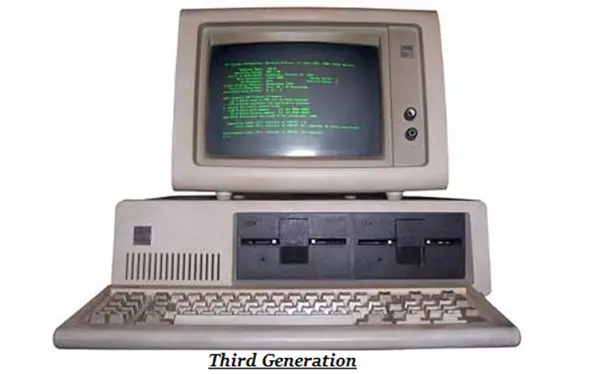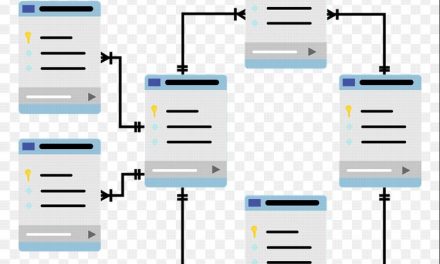It is interesting to note that there are not only 5 generations of programming languages. There are also 5 generations of computers or computer technology in other words. In this article we shall be going through history to see how computers have evolved. In case you are wondering let us briefly look at what defines a computer generation in these contexts. The thing with technology is that is it ever-changing and new advancements are always being made. What differentiates one computer generation from another is some huge leap forward. In simple terms, when a huge and significant technological advancement is made, that is what ushers in the next computer generation.
Table of Contents
First Generation of Computers
You probably have heard before that the first computers were extremely big. Well, you heard right because that was exactly the case with the first generation computer. Typically one computer could fill an entire room. Just to put things into perspective, one of the first generation computers had 20000 vacuum tubes, 70000 resistors and 10000 capacitors. All in all, that computer weighed 30 million kilograms.
The working mechanism was comprised of two major components i.e. vacuum tubes and magnetic drums. The former were meant for the electric circuits that would drive the computer. The latter was the driver of the memory component of the computer. JP Eckert and JW Mauchy built the first ever computer titled the ENIAC. The acronym stood for Electronic Numeric Integrated And Calculator.
Despite being very big they had very little in terms of functionality. Memory capacity was very low and overheating was a huge problem. First generation computers employed the use of low level programming languages (i.e. machine language). The first generation of computers covered a period spanning from 1940 to 1956. Example of a first generation computer is the UNIVAC, EDVAC and IBM-701.
Second Generation of Computers
1956 to 1963 was the period that saw the era of second generation computers. When it comes to the second generation computer there was one huge improvement. We earlier mentioned that circuits for the first generation computer were driven by vacuum tubes. In this era the transistor came in to take the role of the vacuum tubes. This led to improvements in energy consumption and also performance in terms of speed.
Overheating was still an issue here despite the improvements. Second generation computers employed the use of what was called assembly languages. In short, programming them was no longer just strictly based on binary. The use of mnemonics in programming was beginning to pick up momentum here. Examples of second generation computers are the IBM 7094, CDC 1604, and UNIVAC 1108.
Third Generation of Computers
This generation was from 1964 to 1971. With third generation computers came in some interesting changes. One of the key changes was the coming in of integrated circuits. It was Robert Noyce and Jack Kilby who came up with the innovation of integrated circuits during the 1950s. This was all thanks to the fact that transistors had been engineered in such a way that they could be very small. Integrated circuits are still at the core of what computers are in this day and age. Just as speed was stepped in for the second generation computers, it was further stepped up here. Size was markedly improved here because computers became way smaller in size and footprint. The present setup of the computer as it is today started taking shape during this third generation. The idea of having input and output devices along with an operating system was not available for the previous generations. This all came along for the third generation computer. Examples of third generations of computers are the IBM-360 series, IBM-370/168 and TDC-316.
Fourth Generation of Computers
The fourth generation entailed further advancements to the computer. Layers and layers of new innovations were being added to the previous ones to come up with a consummate computer. One of the key highlights of this generation was the coming in of the microprocessor. This played an instrumental role in further reducing the size of the computer. It is also at this time that the idea of ‘personal computer’ came to life. Earlier, computers were still expensive and out of reach of the general public. It is also during this same generation that IBM and Apple started making a name for themselves in the PCs industry. The fourth generation of computers was from 1971 to 2010. Examples of fourth generation computers are STAR 1000, IBM 4341, PDP 11 and DEC 10.
Fifth Generation of Computers
Fifth generation are computers that are still evolving in many ways. Bear in mind that the major highlight of the fifth generation computer is artificial intelligence (AI). It is postulated that in the near future the computer will be able to understand natural language and also to learn on its own. This will be a huge leap forward from the computer understanding binary language and being told what to do by algorithms coded by humans.
Anyways, there are several highlights of the fifth generation computer. Some of them are AI (as stated earlier), advanced semiconductor technology and advanced parallel processing, more user friendly interfaces with multimedia features. This generation includes the fascinating field of quantum computing. Some of the things we just highlighted are strongly believed to be things that will be done by a quantum computer. Currently quantum computers are still evolving and also too expensive to be made available as personal computers. The fifth generation of computers spans from 1980 to present day and the future. Examples of fifth generation computers are laptop, desktop, notebook, chromebook, ultrabook etc.
That is the history of computers with respect to a generation by generation look. The journey is still on as we definitely will see more advancements being made in the evolution of computers. Technologies or fields such as quantum computing and nanotechnology will bring about some amazing computers in the near future.





